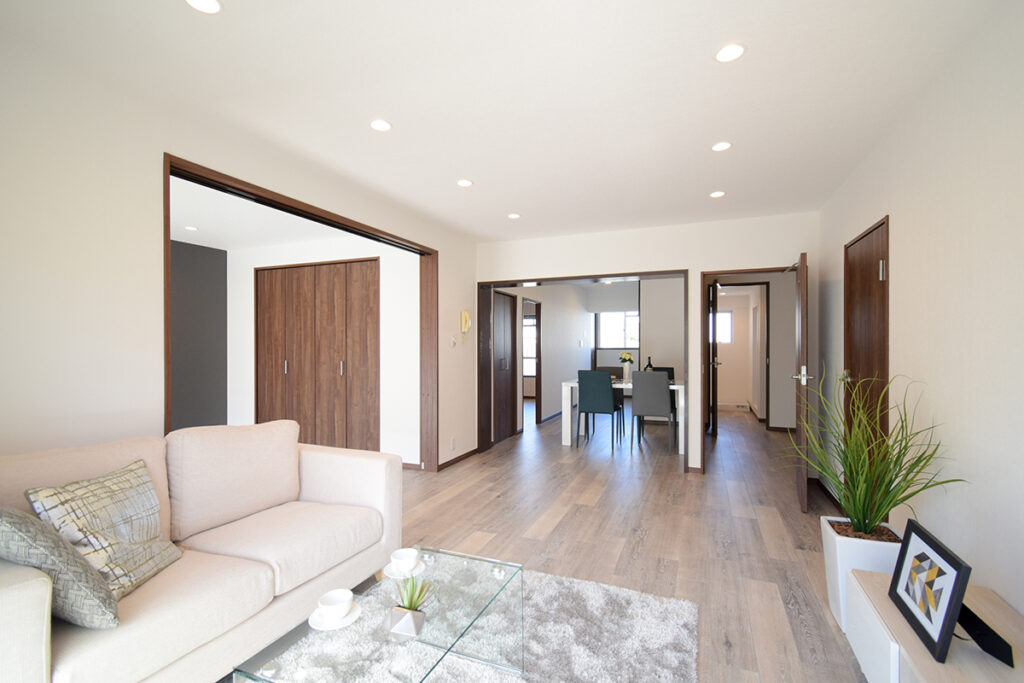Best Locations in Japan for a Second Home
With international interest in Japanese real estate on the rise, many buyers are now asking a crucial question: Where’s the best place to buy a second home in Japan? To help answer this, I spoke again with Tsuyoshi Hikichi, Managing Director of IREA and Axios Management, to learn which areas are attracting the most attention and why.
According to Tsuyoshi, demand for second homes in Japan is still growing, with buyers coming primarily from Singapore and the United States, particularly the West Coast. “About half of our American clients are Asian-American,” he shared, “and we’re also seeing growing interest from Europeans and Australians.”
When it comes to motivation, it’s evenly split: half are looking for vacation homes, and half are focused on investment potential. For many, the appeal lies in Japan’s cultural charm, stability and relatively low property prices compared to other major cities around the world.
Hidden Investment Hotspots in Tokyo
So where are these buyers choosing to invest? “Central Tokyo and the Yokohama area continue to be strong choices,” Tsuyoshi said. In addition, proximity to Haneda and Narita airports is a big plus for international buyers who travel often. Specific neighborhoods such as Ueno, Nippori and Asakusabashi Station are proving especially popular.

These areas strike a balance that’s hard to find: central access, long-term value and relative affordability. While central areas such as Minato-ku are already very expensive, places in Taito-ku and Arakawa-ku still offer great value, according to Tsuyoshi. “They also retain more of that classic Japanese atmosphere, which many international buyers are drawn to,” he said.
In fact, Tsuyoshi sees Taito-ku as an “up-and-coming” area. “Asakusa has already become expensive, but other parts of the ward are still affordable. And they have strong potential for capital appreciation,” he said.
What to Look for in a Tokyo Second Home: From Layout to Location
For international buyers, lifestyle and emotional appeal are important—but so is liquidity. “You have to think about the ease of selling the property in the future,” Tsuyoshi explained. His advice? Buy close to train stations with easy airport access, and consider going for a two-bedroom or larger unit. “Smaller studio units are oversupplied in Tokyo, and family-type units are much easier to resell.”

Striking the right balance between emotional appeal and long-term value requires a personalized approach, something that Tsuyoshi and his agents specialize in. With so many variables to consider, IREA’s process always starts with a consultation. “We need to understand the client’s expectations and lifestyle in Japan,” said Tsuyoshi. “Some people want modern high-rise apartments; others prefer classic homes. We advise based on what fits them best.”
IREA benefits from deep market knowledge shared by its affiliated company, Axios Management. Axios handles ongoing market analysis and shares data and insights with IREA agents, helping them guide buyers to the right decisions.
But their support doesn’t stop after the sale.
End-to-End Management After the Purchase
Once a property is purchased, Axios takes care of everything from utility bills and internet contracts to tax payments and HOA fees. They also offer monthly rental options for when the home isn’t in use, allowing owners to generate income from their second home with minimal hassle.
“It should feel like your own private hotel room in Japan,” Tsuyoshi said. “You don’t have to worry about anything.”
Tsuyoshi warns that international buyers are sometimes lured by what seem like bargains. “I’ve seen people buy old houses in small towns because the yield looks high, but later, they realize the property value doesn’t appreciate, and it’s hard to resell without lowering the price significantly.”
He advises focusing on locations where the population is stable or growing, and where there’s long-term demand. “It’s not just about the purchase. It’s about resale potential, maintenance and value over time. That’s why buyers need guidance from professionals who understand both the sales and the ongoing management side.”

Frequently Asked Questions About Buying a Second Home in Tokyo and Japan
Neighborhoods such as Taito-ku (including Ueno and Asakusabashi), Arakawa-ku and Nippori are becoming popular among foreign buyers. These areas offer central access, strong potential for capital appreciation and a more traditional Japanese atmosphere, often at a lower price point than Minato-ku or Shibuya.
Yes. There are no restrictions on foreign nationals owning property in Japan. However, the process can be complex due to language barriers, financing requirements and legal procedures. That’s why working with a bilingual property advisor familiar with international clients is highly recommended.
Proximity to train stations, easy airport access (especially to Haneda or Narita) and larger layouts such as two-bedroom or family-type units are key. Studio apartments are oversupplied and harder to resell, while larger units typically retain value better.
IREA starts every client journey with a detailed consultation to understand lifestyle preferences, expectations and investment goals. Whether you’re looking for a high-rise in central Tokyo or a more classic home in a quieter neighborhood, IREA tailors its advice to fit your needs.
Yes. Yokohama is a strong choice thanks to its livability and convenient access to Haneda Airport. Other popular options for second homes include resort destinations such as Niseko and Karuizawa, which offer unique lifestyle benefits and long-term investment potential.
Thinking of buying a second home in Japan?
Reach out to IREA for a consultation and discover the best location for your next chapter in Japan.

